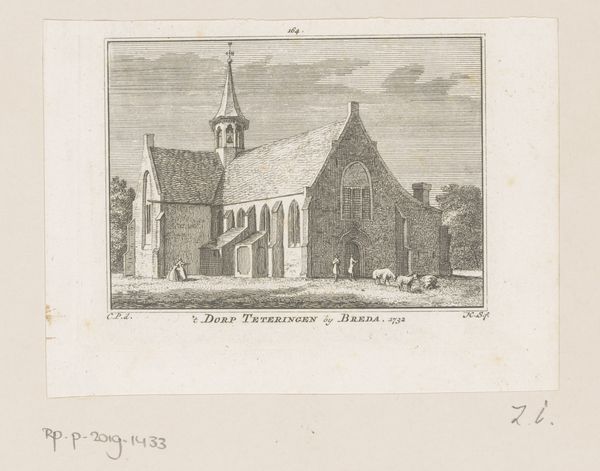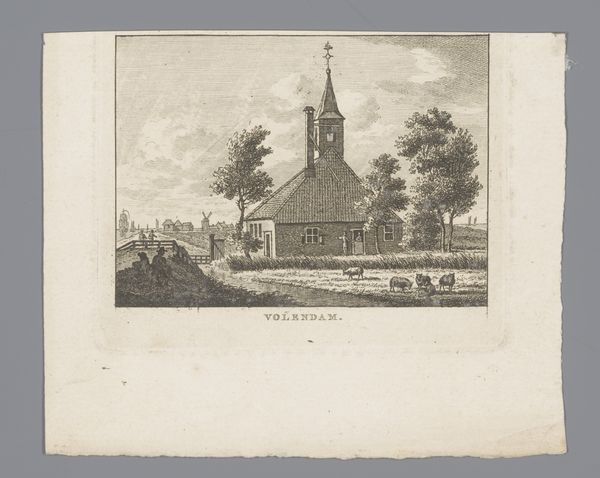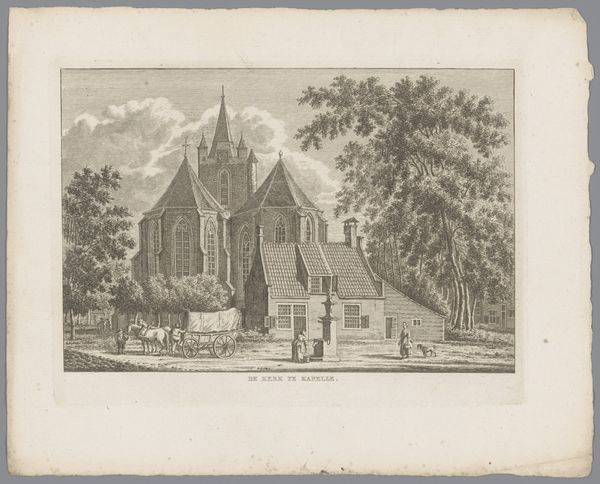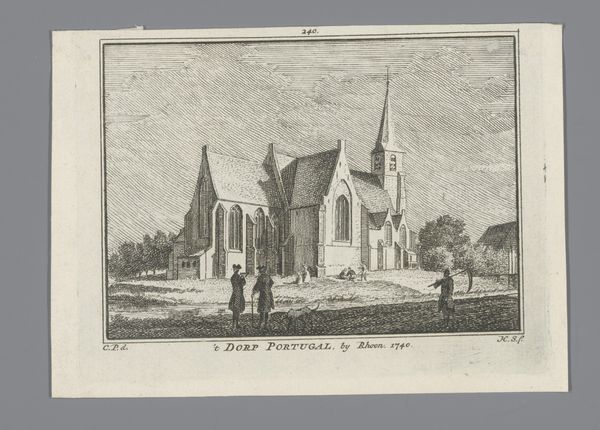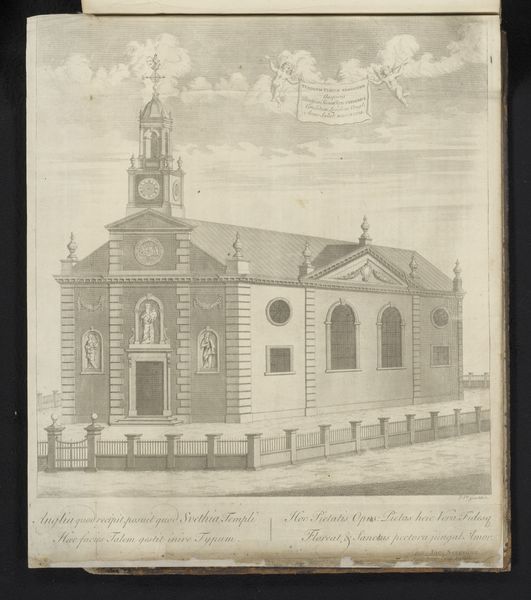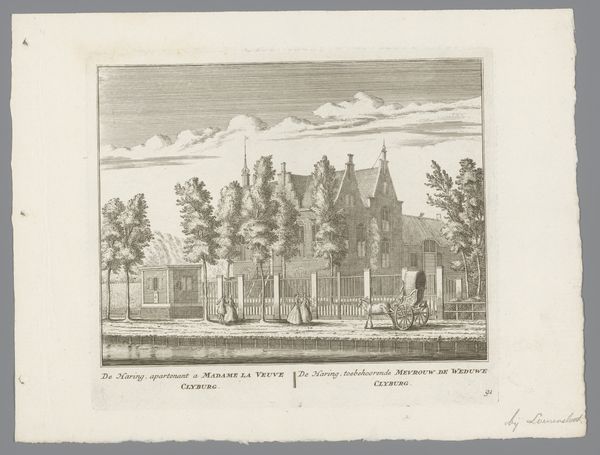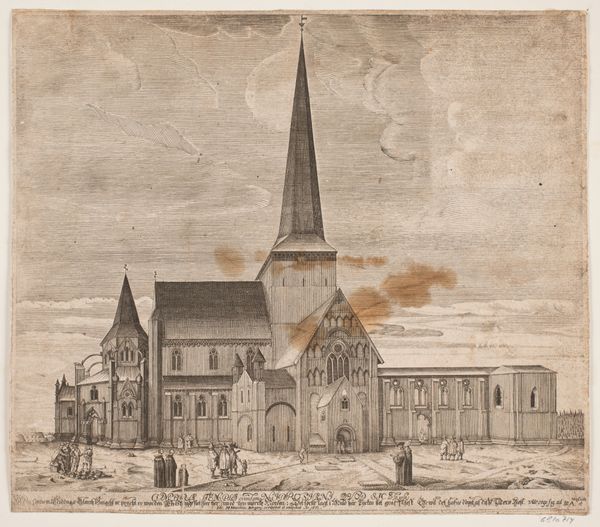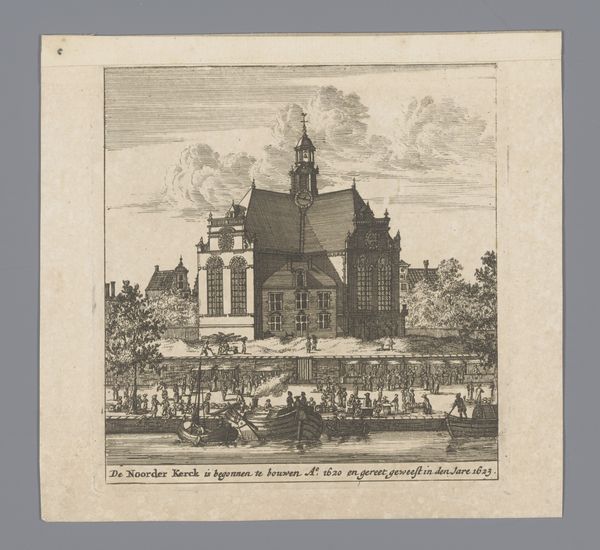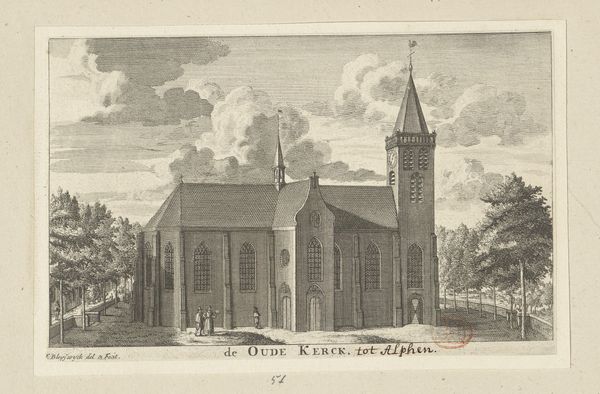
drawing, print, paper, engraving, architecture
#
drawing
#
baroque
# print
#
paper
#
cityscape
#
engraving
#
architecture
Dimensions: height 160 mm, width 215 mm
Copyright: Rijks Museum: Open Domain
Curator: This is Jacobus Harrewijn's "Gezicht op de Grote kerk te Leeuwarden," from around 1720. It's a print, an engraving on paper, housed in the Rijksmuseum. Editor: Thanks. Looking at it, I'm struck by its almost architectural, diagrammatic quality. It feels less like an atmospheric rendering and more like a factual record. What do you make of it? Curator: That's a keen observation. This print exists within a specific historical context. Consider the role of prints during the Baroque period. They were crucial for disseminating information, not just artistic expression. So, how does this impact our interpretation? Editor: So, the artist’s goal wasn't primarily artistic but informative? Curator: Precisely. Think about who commissioned such a piece and why. Likely, it was a civic body wanting to document or promote the city’s infrastructure and identity. It becomes a statement of civic pride and a record of power structures. Does that change how you see it? Editor: It does. It makes me think about the intended audience and the message they were meant to receive. The choice to depict it so starkly, without embellishment, conveys a sense of authority and permanence. It's not just a pretty picture, it's a visual assertion of the church’s and, by extension, the city’s importance. Curator: Exactly! And note the people depicted around the church—they're small, almost incidental. It's a deliberate choice that amplifies the grandeur of the church and reinforces its dominance. What can we say about the politics of imagery at this time? Editor: This really opened my eyes to how deeply intertwined art is with social and political forces. I’ll never look at a cityscape the same way. Curator: And that, is the real power of art history. Always question the context.
Comments
No comments
Be the first to comment and join the conversation on the ultimate creative platform.
